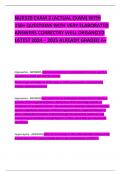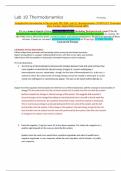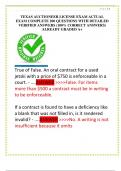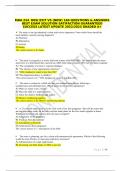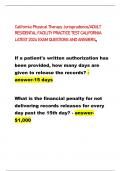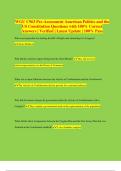Exam (elaborations)
NUR529 EXAM 2 (ACTUAL EXAM) WITH 150+ QUESTIONS WITH VERY ELABORATED ANSWERS CORRECTRY WELL ORGANIZED LATEST 2024 – 2025 ALREADY GRADED A+
- Course
- Institution
NUR529 EXAM 2 (ACTUAL EXAM) WITH 150+ QUESTIONS WITH VERY ELABORATED ANSWERS CORRECTRY WELL ORGANIZED LATEST 2024 – 2025 ALREADY GRADED A+
[Show more]
